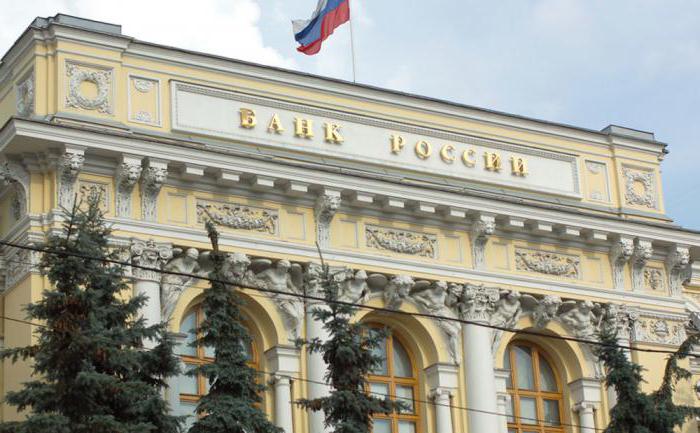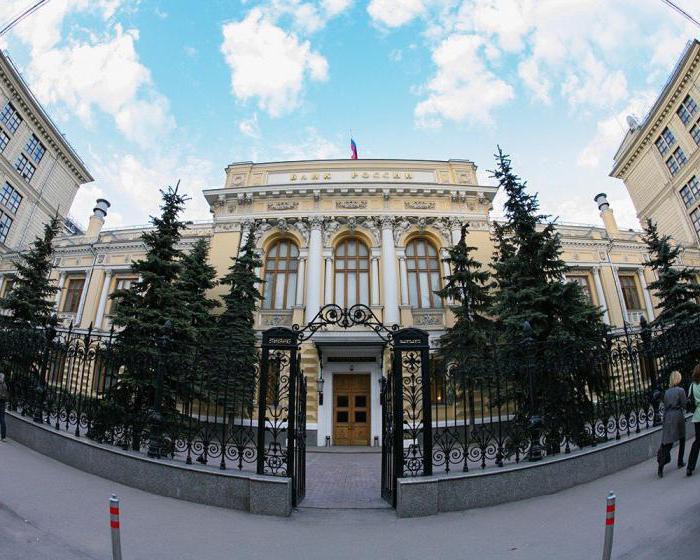The totality of legislative acts, organizations that support the activities of banks and information technologies, on the basis of which banking is carried out, is considered to be a banking infrastructure. This will be discussed in this article, which will examine in detail the actual infrastructure of any bank, its components and functions, and will also talk about the main similar institution of the country - the Central Bank, which is the main among any commercial institutions of this type.
Component concepts of a bank infrastructure
Legal acts regulating banking activities are legal norms that determine the functionality of the Central Bank and commercial banks, internal regulations drawn up for a separate credit institution. Organizations that support the banking system are represented by authorities at various levels, universities and training centers responsible for the competence of banking professionals. Information technology includes software with the help of which banking operations and communication lines are performed.

Reliability and efficiency of the banking infrastructure ensures stable financial relations between market participants, plus it determines the degree of economic growth of the country.
Infrastructure Elements
Banking infrastructure in modern conditions is a dynamically developing mechanism consisting of many interconnected and complementary elements. They are listed below. The following elements of banking infrastructure are divided:
- Provision of production activities.
- Promotion of banking services.
- Ensuring the security of banking operations.
- Providing scientific support for the bank.

Infrastructure Elements in Action
Production activities of banks are provided by personnel, technological, information and intermediary infrastructures. Without personnel infrastructure, there will be no full-fledged employees capable of performing, analyzing, selling and controlling banking operations. In Russia today there are many higher and secondary educational institutions that train bank employees. Since banking does not stand still, the need for the existence and functioning of training centers for continuing education is more than obvious. Training centers are created on the basis of universities, and large banks themselves have their own training centers for their employees, where they regularly conduct trainings and training courses.

To carry out banking operations, special banking equipment is needed, designed to recount money, verify their authenticity, store valuables, etc., which are produced by special firms. Maintenance of an array of banking information requires special attention. Therefore, providing banks with special equipment in the form of computers, scanners, modems, etc., as well as special software plays an important role.
The information infrastructure is represented by various organizations that help banks quickly respond to changes in legislation and on the situation in world markets. Banks sensitively monitor stock quotes and exchange rates.In this aspect, banks work with credit bureaus, with statistical and rating agencies, and with legal information publications.
The popularization of banking services consists in bringing information about banking products to the population and in increasing customer loyalty. For this, banks hold press conferences, publish advertisements for new offers and materials on their activities in various media.
Banking operations are secured by security services designed to protect depositors' funds from theft and fraudulent activities of cybercriminals.
During their work, banks develop and implement their own regulations and instructions for employees based on instructions from the Central Bank, tax authorities and other services. These are regulations on operations, job descriptions, various techniques, etc.
Influencing Factors
Modern banking infrastructure and the directions of its development directly depend on environmental factors in which the activity takes place. It is important. The need to assess the factors that influence the formation of banking infrastructure is necessary, since without it it is impossible to assess the reasons that affect the growth of banking infrastructure. These factors can help determine the necessary measures and areas for optimizing processes in the banking infrastructure.

Macro Level Factors:
- economic;
- technological;
- socio-cultural;
- political;
- natural.
Mesoscale factors:
- state of the banking sector;
- the legislative framework;
- state of the business environment.
Bank infrastructure of the Russian Federation
The institutions of the banking infrastructure of the Russian Federation are developing dynamically taking into account the market situation and technological progress. Banking processes are automated, the amount of information processed by banks is growing year by year, therefore high demands are placed on automation systems. It takes years to develop something new, so the demand for automated banking systems is met by convergence. Software is developed, merged products from different platforms.
The need for personnel is met by state and non-state special educational institutions, the volume of graduating economists and financiers of which does not decrease from year to year. Further training is carried out by non-governmental educational institutions. They offer to acquire additional professional skills at the conducted trainings and seminars at which bank employees can hone their skills in sales or various banking operations. There are few such organizations, therefore, the industry for training highly qualified banking professionals is not sufficiently developed.
Development is also required by the information infrastructure of the banking system of Russia. Banks in their work request and receive information of various purposes and origin. One is collected specifically for certain purposes, the other is requested to solve several problems. Information for banks is provided by news agencies, consulting firms, the media and other organizations. In the information infrastructure of Russia there are practically no organizations specializing in the supply of information only to banks.
The basic information used in the work of banks is provided by the Bank of Russia and news agencies. They use the specialized information from consulting and marketing agencies insignificantly.
Bank infrastructure as part of the system
Banking infrastructure is part of the mechanism for the successful functioning and development of banks. Commercial banks connect producers and the public.The influence of banks on the country's economy is determined by the enormous resources of organizations, entrepreneurs and citizens at their disposal. The banking system is responsible for organizing money circulation, lending, financing the national economy and much more.
Effective functioning of the market is possible only with a developed banking system, the needs of which are met by the huge mechanism of banking infrastructure organizations.
Central Bank: the objectives of its work
The central bank is a state-owned credit institution that regulates the banking system. The main function of its activity is the issue of money and maintaining the stability and reliability of the national currency.
The objectives of the CBR:
- maintaining the stability of the ruble;
- maintenance of the banking system;
- maintaining the effective operation of the payment system.

Central Bank as part of the banking system
The fundamental position occupied by the Central Bank in the banking system of Russia and its role can hardly be overestimated. It directly affects many processes.
Firstly, the activities of banks are affected by the refinancing rate, which they pay to the Central Bank for the loan granted to them.
The credit policy of banks depends on the refinancing rate. With its increase, the credit activity of banks decreases, their interest rates on loans for households and entrepreneurs grow and, accordingly, demand falls. Following a decrease in the refinancing rate, the rates offered by banks to their customers are reduced, making them more attractive.

Secondly, the Central Bank conducts operations in the open market. He participates in the circulation of government securities. This mechanism is also used to regulate the market. booming economy, when lending is fast, the Central Bank can offer government bonds for sale at reduced prices. Their purchase somewhat reduces the reserves of both banks, which were subsequently forced to cut credit policies, and individuals and organizations that reduce their bank deposits.
Amid the economic downturn, the Central Bank buys government bonds, thereby increasing the reserves of market participants.
Central Bank Functions
The Bank of Russia performs many functions in organizing activities and analyzing the banking system:
- issue of money;
- issue of securities;
- development, implementation and control of calculations;
- monetary policy development;
- servicing state and municipal budgets;
- issuance and revocation of licenses of credit organizations, control over their activities;
- registration and control of non-state pension funds;
- organization of storage of cash reserves of credit organizations;
- lending and refinancing organizations;
- management of gold and foreign exchange reserves;
- currency regulation;
- public debt management;
- assistance to troubled banks;
- setting the exchange rate;
- conducting transactions agreed with the IMF;
- analysis and forecasting of the economic situation.

The concept of the banking system
The banking system is the interaction of various banking institutions in a particular country, under certain conditions, in a specific period of time. The purpose of the banking system is the organization of cash flow in the market. Playing a major role in financial and credit policy, she is responsible for the banking services of the state turnover.
The concept of the banking system, structure, functions will be complete only when considering all of these elements.
Banking system structure
The structural banking system of the Russian Federation consists of 2 levels. She has a strict hierarchy. The highest level is occupied by the Central Bank, below are commercial and other banks.The Central Bank controls the activities of banks, manages gold and currency reserves, organizes the circulation of cash and non-cash transactions, and banks directly offer services to the population. Also, the banking system can be divided into sectors, including institutions specializing in any areas.
Banking system functions
- credit intermediation;
- accumulation of savings and their use as investments;
- emission function;
- receiving and making payments;
- customer consultation;
- issue and disposal of money.
Conclusion
Banking infrastructure, being part of the banking system, ensures its productive functioning, which, in turn, plays an important role in financial relations between market participants. In times of crisis, it is precisely cohesion and joint activity of elements of the banking system that will help stabilize the economy and determine the ways of its development. Despite all the shortcomings of the Russian banking system and its fragmentation and segmentation, non-standard solutions and bold policies aimed at the effective functioning of interconnected elements make it possible to look into the future with confidence.